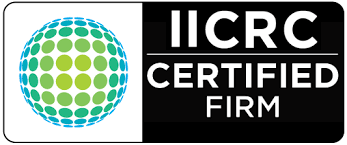The Use of Industrial-Grade Disinfectants in Biohazard Decontamination
In the realm of biohazard decontamination, the application of industrial-grade disinfectants is paramount to ensure the effective elimination of hazardous pathogens and the restoration of safe environments. These potent cleaning agents are specifically formulated to neutralize a wide spectrum of microorganisms, including bacteria, viruses, and fungi, which are often present in biohazardous situations.

Understanding Industrial-Grade Disinfectants
Industrial-grade disinfectants are robust chemical solutions designed for rigorous decontamination tasks. Unlike standard household cleaners, these disinfectants possess higher concentrations of active ingredients, enabling them to eradicate resilient pathogens encountered in biohazard scenarios. Their efficacy is critical in settings such as healthcare facilities, laboratories, and areas exposed to biological contaminants.
Applications in Biohazard Decontamination
The utilization of industrial-grade disinfectants is integral to various biohazard remediation processes:
-
Crime Scene Cleanup: Following incidents involving bodily fluids, these disinfectants are essential to sanitize affected areas, eliminating potential health risks.
-
Infectious Disease Control: In outbreaks, thorough decontamination with potent disinfectants helps prevent the spread of pathogens.
-
Laboratory Sterilization: Research facilities employ these solutions to maintain sterile environments, crucial for accurate scientific work.
Selecting the Appropriate Disinfectant
Choosing the right industrial-grade disinfectant involves considering several factors:
-
Spectrum of Efficacy: The disinfectant should be effective against a broad range of pathogens, including specific ones identified in the contaminated area.
-
Contact Time: This refers to the duration the disinfectant must remain on a surface to achieve optimal pathogen elimination.
-
Material Compatibility: Ensuring the disinfectant does not degrade or damage surfaces and equipment is vital.
-
Safety Profile: Understanding the potential hazards associated with the disinfectant, including toxicity and required personal protective equipment (PPE), is essential for safe application.
Implementation Protocols
Effective decontamination with industrial-grade disinfectants follows a structured approach:
-
Risk Assessment: Identify the nature and extent of contamination to determine the appropriate disinfectant and application method.
-
Surface Preparation: Clean surfaces to remove organic matter that may impede the disinfectant's action.
-
Application: Apply the disinfectant uniformly, adhering to manufacturer guidelines regarding concentration and contact time.
-
Ventilation: Ensure adequate airflow during and after application to disperse fumes and facilitate drying.
-
Waste Disposal: Dispose of used materials and PPE in compliance with regulatory standards to prevent environmental contamination.
Regulatory Compliance and Safety
Adherence to regulations set by agencies such as the Environmental Protection Agency (EPA) and the Occupational Safety and Health Administration (OSHA) is mandatory. These guidelines govern the safe use, handling, and disposal of industrial-grade disinfectants, ensuring both user safety and environmental protection.
Conclusion
The strategic application of industrial-grade disinfectants is a cornerstone of effective biohazard decontamination. By selecting appropriate disinfectants and following meticulous protocols, professionals can ensure the thorough neutralization of hazardous pathogens, thereby safeguarding public health and restoring safety to affected environments.

















